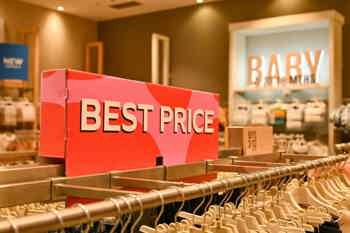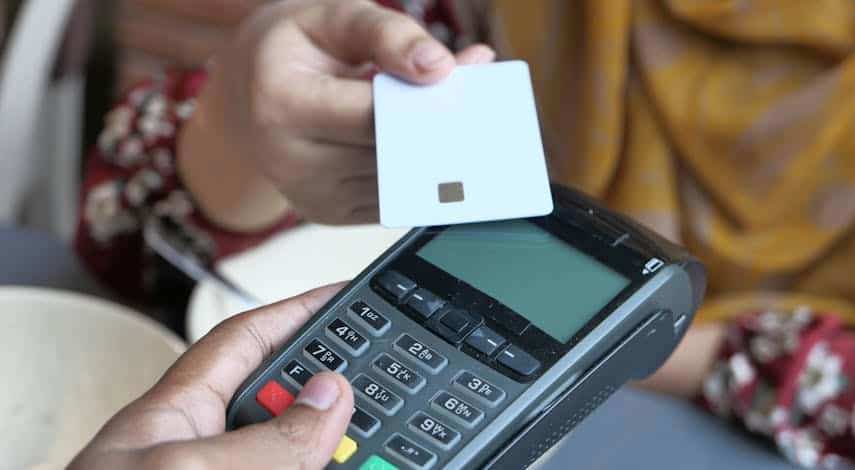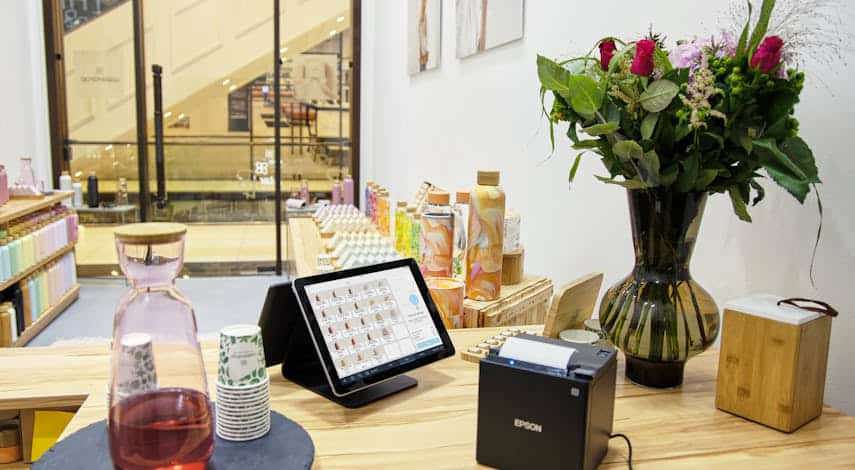
Retail software is a range of technological solutions that can help retailers improve customer satisfaction, profitability, efficiency, and productivity by streamlining manual tasks.
While some businesses initially use paper- or spreadsheet-based systems to track important records, these solutions are often too limited or too slow to support efficient operations. Retail software automates critical business processes in a way that traditional systems cannot.
This article explores some of the common types of retail software, key features and benefits, and examples.
What is retail software?
Retail software, also called retail management software, refers to digital systems used by retail organisations to manage various business activities, including stock control, payment processing, customer management, and bookkeeping.
Some common examples of retail software include:
- Point of sale (POS) software
- Retail inventory management software
- Cloud-based accounting applications
- Customer relationship management (CRM) software
Companies employ retail management software to manage different aspects of their retail supply chain. Retail software is often used to improve accounting and inventory accuracy, monitor business performance, or keep track of key customer information.

How does retail software work?
Retail software works by automating and digitising key retail management processes to streamline operations, improve efficiency across the business, and minimise costs. It unites sales processing functions with features such as vendor management, inventory, sales, customer service, marketing, and accounting.
Retail management software is used for a variety of applications, including warehouse management, transport management, and merchandising activities. You can install retail software on-site or access it via cloud-based subscriptions, depending on the needs and preferences of the business.
There are many types of retail software, as we’ll soon cover.
Each of these serves to optimise a different aspect of a company’s operations.
Retail warehouse management systems, for example, are used to manage the movement and storage of materials, products, and finished goods in a retail warehouse, brick-and-mortar store, or other storage facility.
Benefits of using retail software
The primary purpose of any retail software system is to improve how efficiently a company conducts business. It achieves this by automating core processes in a business’s operations and improving data accuracy and security.
Key benefits of retail management software include:
- Time savings: Automated workflows can help companies save time by reducing the amount of labour and admin associated with specific tasks.
- Cost savings: Because retail software improves business efficiency and productivity, the operational costs of the business are reduced.
- Accurate records: Digital systems are more reliable and accurate for managing company data, as they are less prone to human error compared to manual systems.
- Higher customer satisfaction rates: With the right software in place, retailers will have fewer stockouts, order errors, and other issues that can result in unsatisfied customers.
- Improved productivity: More efficient processes also mean a more productive business. Your output capacity and sales potential will be greater as you’ll have more time to focus on revenue-generating activities.
- Happier staff: Employees who are empowered to do their jobs efficiently using the right software can feel greater job satisfaction, which may be reflected in their work output.
- Smarter business decisions: Many retail software systems enable you to gather and report on key data that can help inform business strategy.
Additionally, retail software helps businesses integrate their supply chain – connecting with suppliers, accountants, and third-party logistics providers – to boost supply chain visibility and response time.

Types of retail software solutions
Retail software solutions help retailers manage different aspects of their business.
Common types of retail software:
- Accounting software
- Inventory management software
- Point-of-sale (POS) software
- Analytics software
- ERP software
- Retail execution software
- Pricing software
- Arbitrage software
- CRM software
Here’s how they work.
1. Retail accounting software
Retail accounting software helps you to track cash flow, maintain accurate financial records, and measure the impact of sales and bills on your cash position.
Cloud-based accounting software often integrates with retail POS apps and leading payment services to seamlessly manage credit card and other payments, also syncing to your sales data.
Common features of retail accounting software include:
- Invoicing
- Bank reconciliation
- Expense tracking
- Inventory accounting
- Tax management
- Payroll
- Reporting
2. Retail inventory management software
Retail inventory management software helps you keep track of your inventory stock, sales orders, purchases, and deliveries.
In addition to minimising your costs and improving productivity, retail inventory management software solves the problems of overstocking, stockouts, inaccurate data, human errors, and theft by automating stock control processes and boosting inventory accuracy.
Key features of retail inventory management software include:
- Barcode scanning
- Real-time inventory control
- Purchase order management
- Multichannel order management
- Automatic reorder points
- Demand forecasting
- Reporting and analytics
When you integrate retail inventory software with your accounting system, you’ll gain a clearer understanding of your financial position and profitability throughout the year.
3. Retail POS software
Retail POS software is software that records sales transactions at the point of sale – typically a checkout counter, an online checkout point, or a mobile EFTPOS machine. It usually runs on a hardware device such as a cash register, tablet, or smartphone. The POS software application handles product information, prices, discounts, taxes, and customer data.
The purpose of retail POS software is to help retailers speed up checkout processes and improve customer satisfaction.
Common features of retail POS software include:
- Payment processing
- Inventory management
- Customer relationship management
- Reporting and analytics
- Accounting integrations
- Ecommerce integrations
POS software can accept different forms of payment, including cash, credit and debit cards, and mobile wallets, and can also issue receipts, invoices, and refunds. It may also provide business performance insights, generating reports and charts to present sales volumes, revenue, profit margins, top-selling products, and customer purchasing behaviour.

4. Retail analytics software
Retail analytics software collects and analyses data related to your business performance, customer behaviour, market trends, and competitors. It can help you optimise operations, increase sales, and improve customer satisfaction to gain a competitive edge in the market.
Common features of retail analytics software include:
- Data integration
- Data analysis
- Visuals
- Reporting
Effective retail analytics software can integrate data from multiple sources – such as your POS systems and ecommerce platforms – and create custom reports that provide a range of analysis such as descriptive, predictive, and prescriptive analytics, along with machine learning and AI.
5. Retail ERP software
Retail ERP software is a comprehensive solution that integrates various functions of a retail business, such as accounting, human resources, supply chain management, CRM, and business intelligence.
Common features of retail ERP software include:
- Supply chain management
- Demand forecasting
- Inventory management
- Accounting and payroll
- Customer relationship management
- Human resources
Because of the high implementation and subscription costs, ERP software is typically suited to large organisations with complex operational needs.
6. Retail execution software
Retail execution software helps consumer-packaged-goods companies to plan, manage, and monitor in-store activities. It’s useful for organisations with a large network of sales representatives, distributors, or retailers.
Features of retail execution software include:
- Planning and optimisation
- Data collection and reporting
- Communication
- Compliance
Retail execution software can help sales reps plan customer visits based on factors such as location, frequency, priority, and availability. It also helps them optimise their routes to save time and travel.
7. Retail pricing software
Retail pricing software helps you set optimal prices for your products or services. It’s useful for solving the problem of manual and inefficient pricing strategies that can lead to lost sales, low margins, or customer dissatisfaction.
Features of retail pricing software include:
- Pricing optimisation
- Price management
- Business intelligence
Retail pricing software can help you determine the best price for each product or service based on various factors such as demand, supply, costs, customer behaviour, and business goals. It provides insights and reports on your business and your competitors' pricing performance, trends, and opportunities.
8. Retail arbitrage software
Arbitrage is the simultaneous purchase and sale of similar items in different markets, exploiting short-lived variations in the price of identical or similar assets to profit from tiny differences.
Retail arbitrage software, therefore, is a tool that helps you find profitable products to resell on online platforms like Amazon or Shopify. It’s useful for purchasing low and selling high, with little time and effort put into product research, product sourcing, and listing.
It works by scanning barcodes or entering product names to get instant data on price, rank, and reviews – then comparing prices across different online marketplaces and local stores to find the best deals.
Retail arbitrage software solves the need to find products that have high demand and low competition. It does that work for you, as well as calculating your potential profit margin, fees, and taxes.
9. Retail CRM software
Retail CRM is a software solution built specifically to help retail businesses organise customers and stay connected in a trackable environment. Retail CRM software gives you a range of customer insights including customer purchasing histories and average order value.
Key features of retail CRM software include:
- Customer segmentation
- Lead management
- Order management
- Document management
- Sales forecasting
- Sales analytics and reporting
- Interaction tracking

Retail software examples
Here’s a quick look at some retail software examples that deal with different aspects of a company’s operations, including stock control, payment processing, and order management.
1. Unleashed
Unleashed is a retail inventory management system that helps businesses optimise stock levels, minimise inventory costs, and maximise operational productivity. Unleashed combines powerful purchasing and order management functionality with cloud-based stock control to help you automate and streamline your supply chain processes.
2. Lightspeed Retail
Lightspeed Retail, formerly known as Vend, is a retail point-of-sale system that helps you optimise your sales and payment processing workflows to give customers a problem-free shopping experience. Lightspeed can be integrated with your inventory and accounting systems for end-to-end data synchronisation and inventory accuracy.
3. Shopify
Shopify is an ecommerce retail order management platform that enables retailers to build an online store and manage customer orders online. It simplifies the process of creating a business website with drag-and-drop tools that eliminate the need to understand complex web development activities.
4. Access Financials
Access Financials is a robust finance management system for medium-sized retailers and not-for-profit organisations. It provides advanced accounting features such as financial reporting, project costing, sales processing, and cash flow forecasting.
5. Shiptheory
Shiptheory is a retail shipping management system that helps you streamline your shipping workflows and optimise order fulfilment. It offers flexible shipping rules, direct carrier integrations, and automated label printing to improve the efficiency of your delivery management processes.
